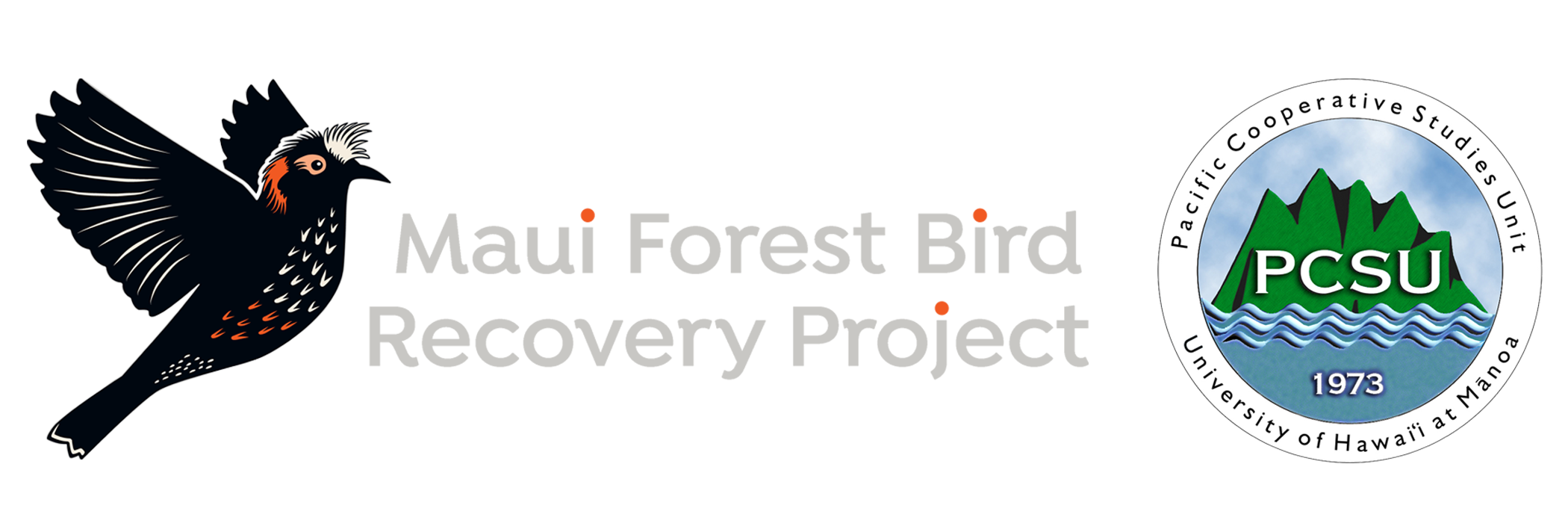PREDATOR CONTROL
RIDDING FOREST HABITATS OF INVASIVE SMALL MAMMALSInvasive species are considered a major threat to endemic flora and fauna in Hawai’i. In particular, introduced mammalian predators can negatively impact native bird populations and are known to be a source of biodiversity loss and ecosystem degradation. Cats (Felis silvestris), rats (Rattus spp.), and mongooses (Herpestes javanicus) have been documented to kill forest birds and are responsible for some being threatened, endangered, and even extinct. These predators were all introduced to the Hawaiian Islands by humans for various reasons, none being biodiversity protection.
Cats and mongooses, specifically, are among the top 100 of the world’s worst invasive species. They are both prolific predators as well as disease vectors. In Hawai’i, there is a growing population of feral cats; estimates are between 20,000 to half a million cats on Maui Island. These animals are able to hunt and roam in native forest reserves that are meant to protect native birds. Both of these animals can climb trees and depredate native birds’ eggs, nestlings, and vulnerable females.
Predator control is considered an essential component to endangered species and habitat management in Hawai’i. The control of these introduced predators has been an important management strategy to aid native species across island regions. Trapping (lethal and non-lethal), poison, and hunting have all been used in attempt to eradicate or control these animals. Native bird recovery has been documented after predator control or eradication; for instance, in New Zealand, 32 taxa of terrestrial birds were affected. Removing predators has shown to have a large, positive affect on hatching and fledgling success and breeding populations.
As part of the University of Hawai’i, Maui Forest Bird Recovery Project’s predator control program only operates with approval of The Institutional Animal Care and Use Committee (IACUC). This is a federally mandated committee, qualified through the experience and expertise of its members, that oversees its institution’s animal program, facilities, and procedures. This ensures all animal capture and dispatch is done in accordance to humane and approved practices.
Additional reading, Final Environmental Assessment Predator Damage Management to Protect Avian Wildlife in Hawai’i by the USDA
Recommended references:
- Atkinson, IAE. 1977. A reassessment of factors, particularly Rattus rattus, that influenced the decline of endemic forest birds in the Hawaiian Islands. Pacific Science 31: 109-133.
- Barun A, CC Hanson, KJ Cambell, D Simberloff. 2011. A review of small Indian mongoose management and eradications on islands. Island invasives: eradication and management: 17-25. IUCN, Gland, Switzerland.
- Camp, RJ, PM Gorresen, TK Pratt, BL Woodworth. 2009. Population trends of native Hawaiian forest birds, 1976–2008: the data and statistical analyses. Hawai`i Cooperative Studies Unit Technical Report HCSU-012. University of Hawai`i at Hilo, Hilo, HI.
- Campbell, KJ, G Harper, D Algar, CC Hanson, BS Keith, S Robinson. 2011. Review of feral cat eradications on islands. Island invasives: eradication and management: 37-46. IUCN, Gland, Switzerland.
- Cave, J. 2014. Maui’s feral cat population is so massive it’s threatening a bird sanctuary. Huffington Post Online. Kahului, HI.
- Côté, I and W Sutherland. 1997. The effectiveness of removing predators to protect bird populations. Conservation Biology 11: 395-405.
- Cole, FR, LL Loope, AC Medeiros, CE Howe, LJ Anderson. 2000. Food habits of introduced rodents in high-elevation shrubland of Haleakalā National Park, Maui, Hawai’i. Pacific Science 54: 313–329.
- Fisher, P, D Algar, E Murphy, M Johnston, C Eason. In press. 2014. How does cat behaviour influence the development and implementation of monitoring techniques and lethal control methods for feral cats? Applied Animal Behaviour Science.
- Hanson, CC, JE Bonham, KJ Campbell, BS Keitt, AE Little, G Smith. 2010. The removal of feral cats from San Nicolas Island: methodology. Proc. 24th Vertebrate Pest Conference (R. M. Timm and K. A. Fagerstone, Eds.): 72-78. University of California, Davis.
- Hays WST and S Conant. 2007. Biology and impacts of Pacific Islands invasive species. 1. a worldwide review of effects of the small Indian mongoose, Herpestes javanicus (Carnivora: Herpestidae). Pacific Science 61: 3–16.
- Lane, C, A Bengsen, E Murphey, eds. 2013. Proceedings of the national feral cat management workshop, November 30th 2010. Invasive Animals Cooperative Research Centre.
- Lowe S, M Browne, S Boudjelas, M De Poorter. 2000. 100 of the World’s Worst Invasive Alien Species: A Selection from the Global Invasive Species Database. Invasive Species Specialist Group.
- 2009. Pest control guidelines. Compiled from Biodiversity Technical Guidelines Restoring the Balance: Northland Biodiversity Self-Help Kit Landcare Trust Trapper Training Workshops 2006, 2007, 2008. New Zealand Landcare Trust and Pacific Invasives Initiative.
- Nogales, M, A Martin, BR Tershy, CJ Donland, D Veitch, N Puerta, B Wood, J Alonso. 2004. A review of feral cat eradication on islands. Conservation Biology 18: 310-319.
- Pacific Invasives Initiative. 2015. Guidelines on cat eradication and monitoring techniques. Version 1.2.2.
- Peters D, L Wilson, S Mosher, J Rohrer, J Hanley, A Nadig, M Silbernagle, M Nishimoto, J Jeffrey. 2011. Small Indian mongoose – management and eradication using DOC250 kill traps, first lessons from Hawai’i. Island invasives: eradication and management: 225-227. IUCN, Gland, Switzerland.
- Smith RK, AS Pullin, GB Stewart, WJ Sutherland. 2010. Effectiveness of predator removal for enhancing bird populations. Conservation Biology 24: 820–829.
- Sugihara, R. 1997. Abundance and diets of rats in two native Hawaiian forests. Pacific Science 51.2: 189-198.
- Towns, DR. 2011. Eradication of vertebrate pests from islands around New Zealand: what have we delivered and what have we learned? Island invasives: eradication and management: 364-371. IUCN, Gland, Switzerland.
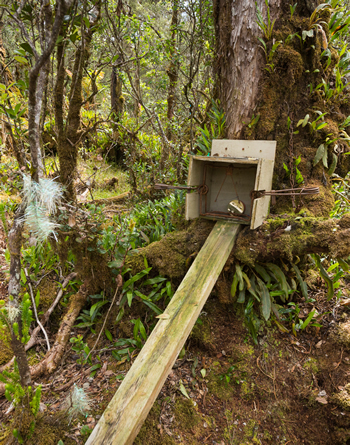
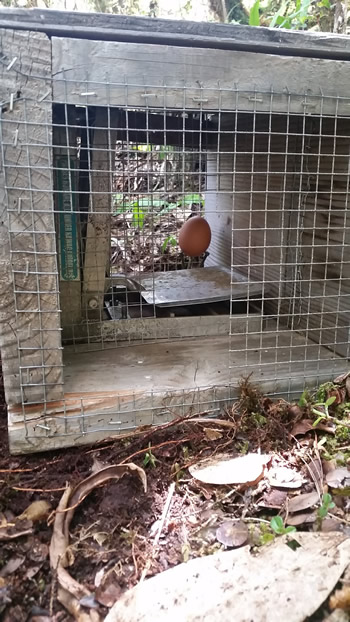
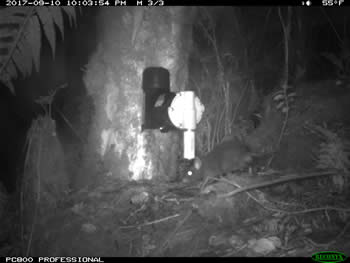
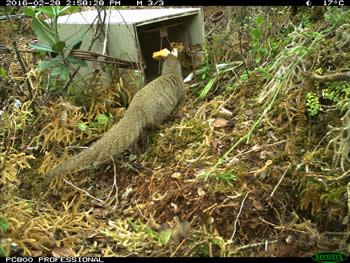
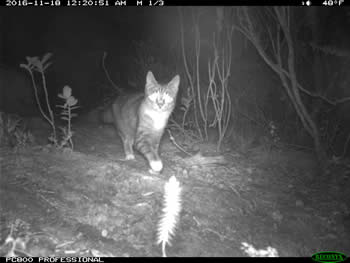
Save the Forest, Save the Birds
It takes a community of dedicated individuals and support to make conservation happen
